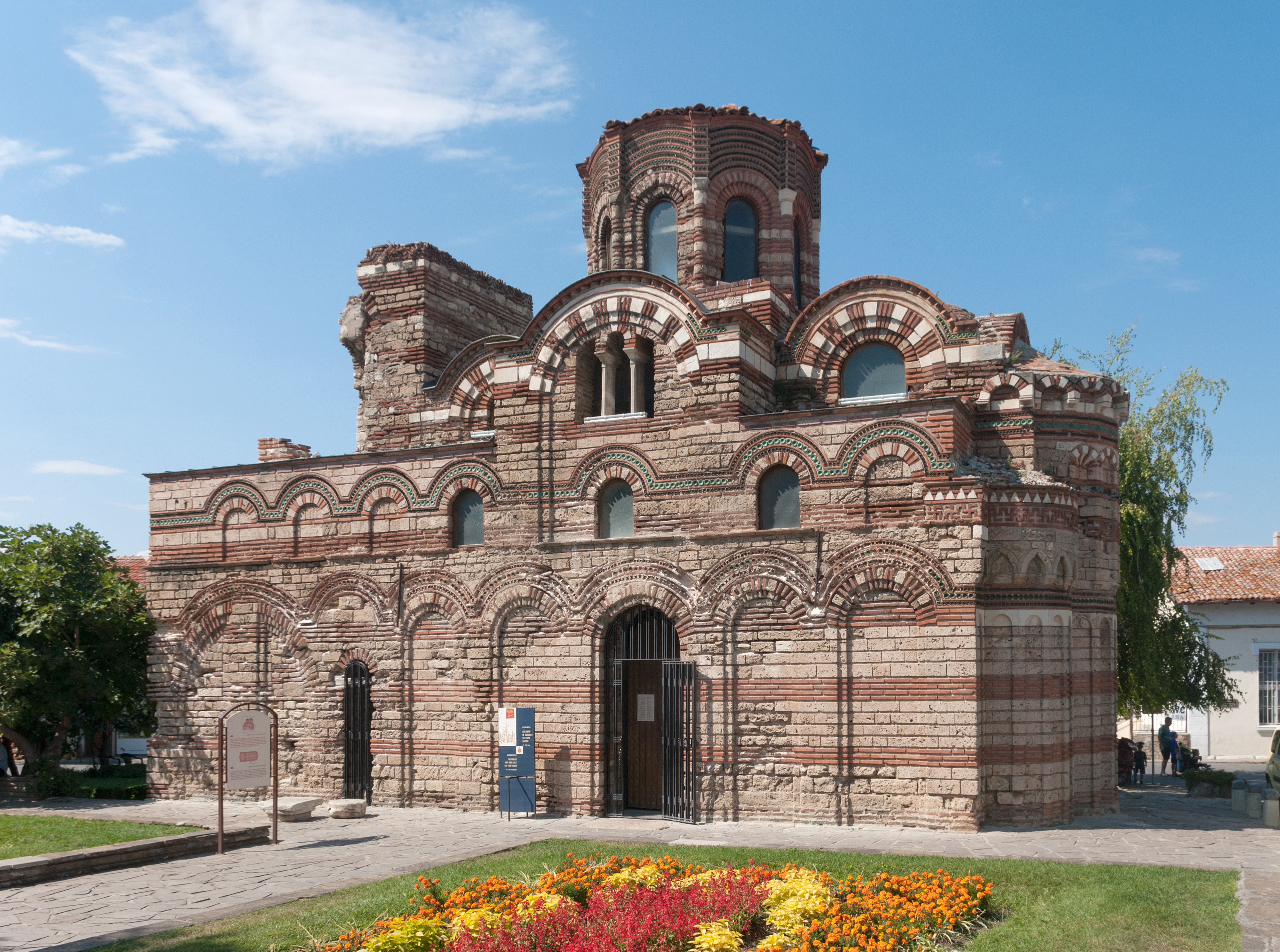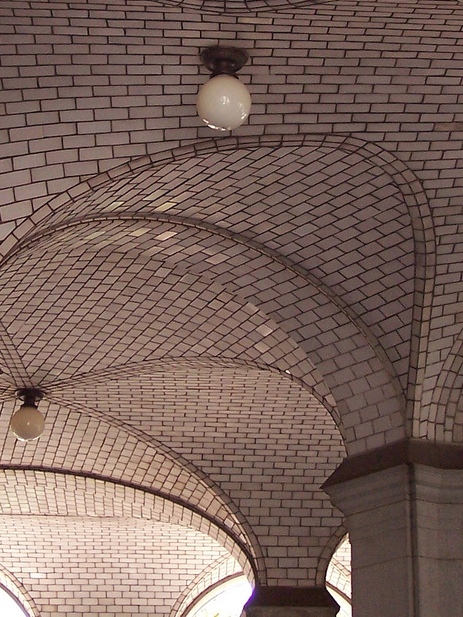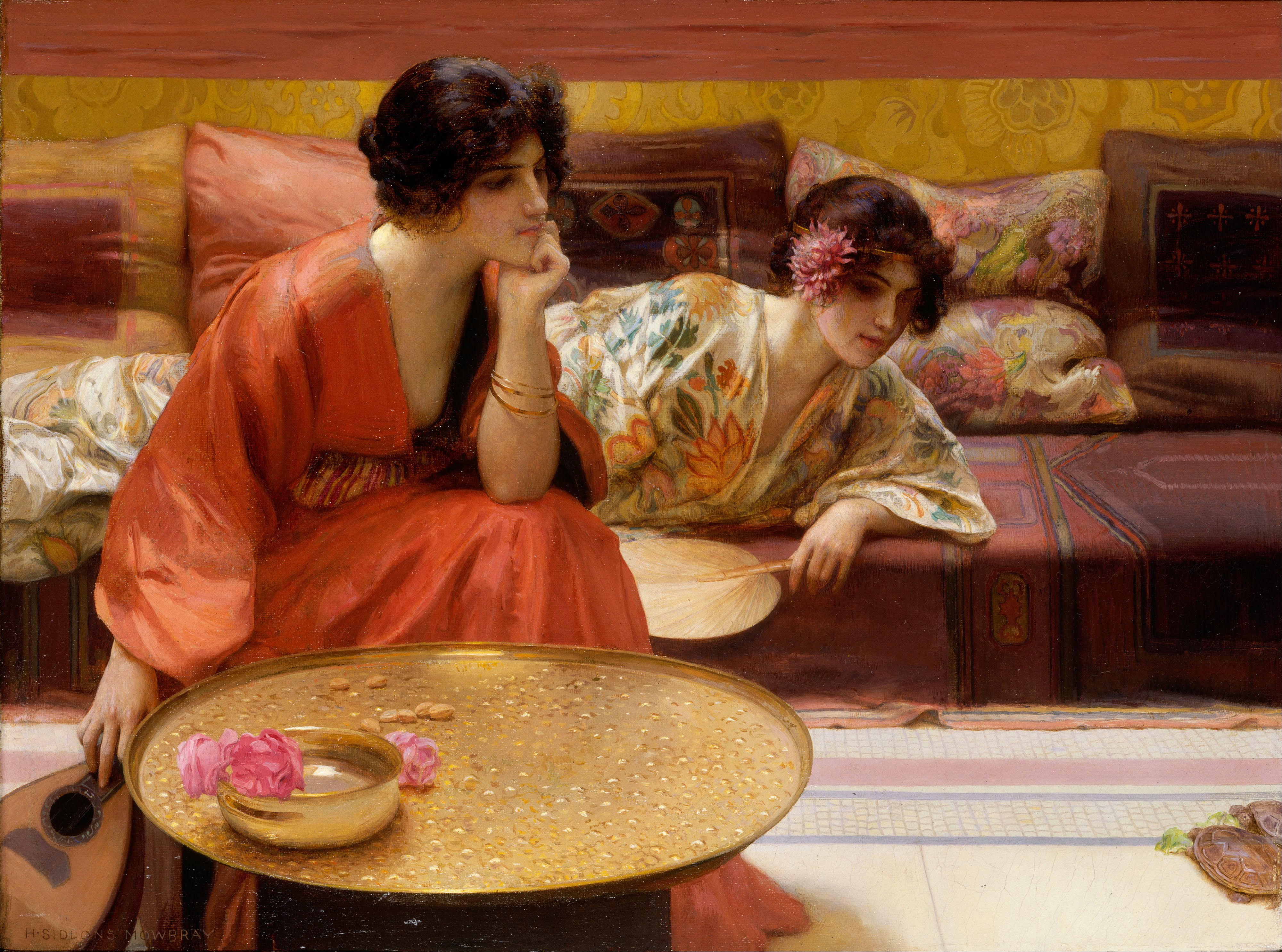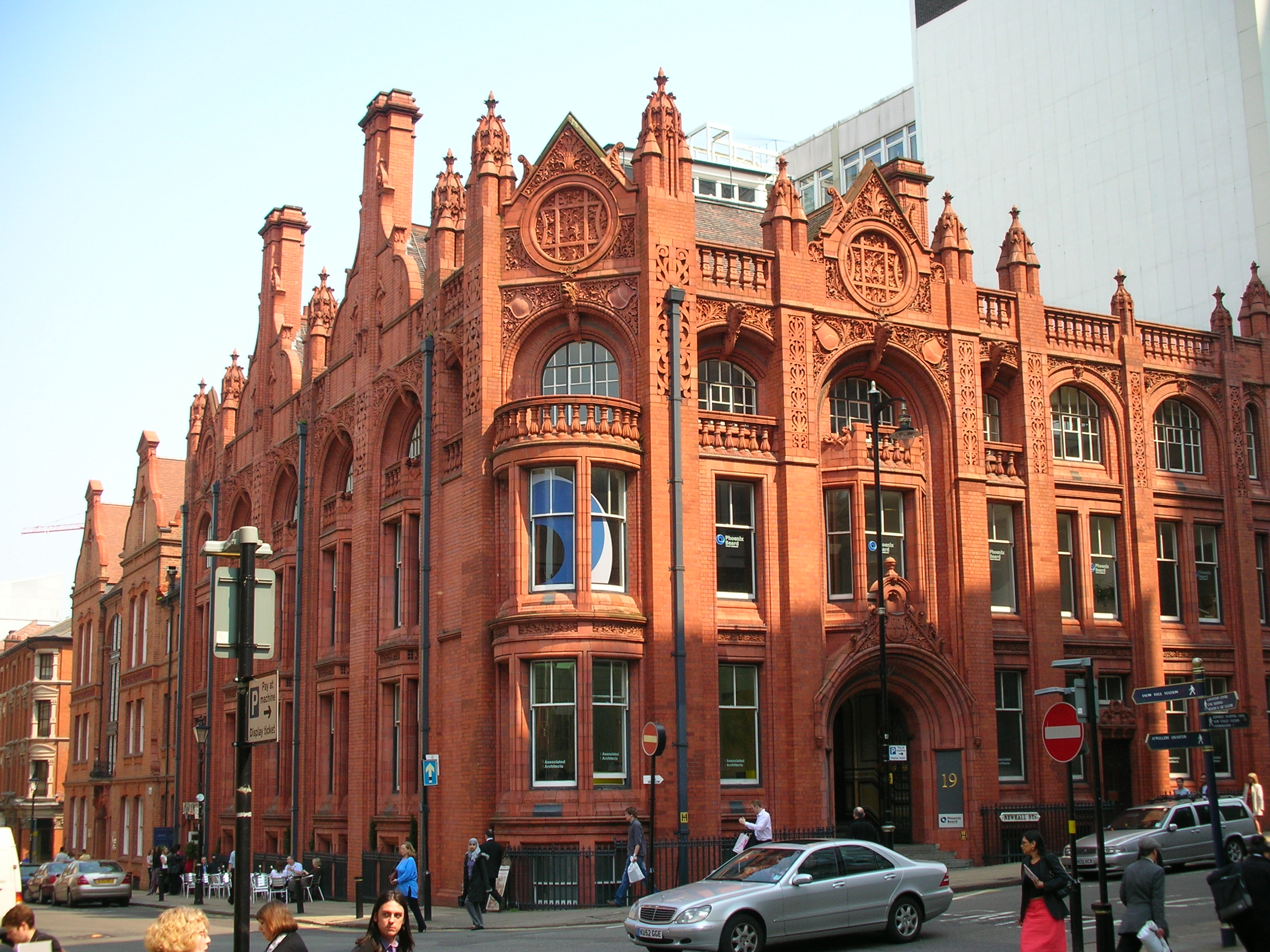|
Madison Square Presbyterian Church, New York City (1906)
Madison Square Presbyterian Church (demolished 1919) was a Presbyterian church in Manhattan, New York City, located on Madison Square Park at the northeast corner of East 24th Street and Madison Avenue. It was designed by Stanford White in a High Renaissance architectural style, with a prominent central dome over a cubical central space in an abbreviated Greek cross plan; it was built in 1906. The inaugural service was on October 14 of that year. The congregation's church had previously been located on the opposing, southeast corner of Madison and 24th Street, in a Gothic-style structure, also called the " Madison Square Presbyterian Church", whose cornerstone was laid in 1853 and which was completed the following year. Metropolitan Life Insurance Company purchased the original site for the construction of the Metropolitan Life Insurance Company Tower, a 48-story building completed in 1909 which was the world's tallest building when it was constructed.Staff"RAZE PARKHURST CHURCH ... [...More Info...] [...Related Items...] OR: [Wikipedia] [Google] [Baidu] |
New York City
New York, often called New York City (NYC), is the most populous city in the United States, located at the southern tip of New York State on one of the world's largest natural harbors. The city comprises five boroughs, each coextensive with a respective county. The city is the geographical and demographic center of both the Northeast megalopolis and the New York metropolitan area, the largest metropolitan area in the United States by both population and urban area. New York is a global center of finance and commerce, culture, technology, entertainment and media, academics, and scientific output, the arts and fashion, and, as home to the headquarters of the United Nations, international diplomacy. With an estimated population in 2024 of 8,478,072 distributed over , the city is the most densely populated major city in the United States. New York City has more than double the population of Los Angeles, the nation's second-most populous city. [...More Info...] [...Related Items...] OR: [Wikipedia] [Google] [Baidu] |
Charles Henry Parkhurst
Charles Henry Parkhurst (April 17, 1842 – September 8, 1933) was an American clergyman and social reformer, born in Framingham, Massachusetts. Although scholarly and reserved, he preached two sermons in 1892 in which he attacked the political corruption of New York City government. Backed by the evidence he collected, his statements led to both the exposure of Tammany Hall and to subsequent social and political reforms. Early years He was born on a farm on April 17, 1842 in Framingham, Massachusetts. Parkhurst did not attend a formal school until he was twelve. Despite this, he showed a strong interest in education and graduated from Amherst College in 1866. He became principal of the high school in Amherst in 1867. He married Ellen Bodman on November 23, 1870, she being one of his former students. Parkhurst studied theology at Halle in 1869, and became a professor at the Williston Seminary in Easthampton, Massachusetts, in 1870–1871. After further studies in Leipzig ... [...More Info...] [...Related Items...] OR: [Wikipedia] [Google] [Baidu] |
University Place (Manhattan)
University Place is a short north-south thoroughfare in the Greenwich Village neighborhood of Manhattan, New York City, United States, which runs from Washington Square Park in the south as a continuation of Washington Square East, taking the position of Madison Avenue uptown, and terminates at East 14th Street just southwest of Union Square. Although the roadway continues north of 14th Street as Union Square West, traffic on the two streets run in opposite directions (University Place uptown, and Union Square West downtown), both feeding into 14th Street. Until the late 1990s, University Place was a two-way street. The street contains numerous cafes, shops, and restaurants, many of which cater to students at NYU and The New School. History University Place was formerly part of Wooster Street, but received a new name in 1838, a year after New York University New York University (NYU) is a private university, private research university in New York City, New York, U ... [...More Info...] [...Related Items...] OR: [Wikipedia] [Google] [Baidu] |
Fifth Avenue
Fifth Avenue is a major thoroughfare in the borough (New York City), borough of Manhattan in New York City. The avenue runs south from 143rd Street (Manhattan), West 143rd Street in Harlem to Washington Square Park in Greenwich Village. The section in Midtown Manhattan is one of the most expensive List of shopping streets and districts by city, shopping streets in the world. Fifth Avenue carries Bidirectional traffic, two-way traffic between 135th Street (Manhattan), 143rd and 135th Streets, and one-way traffic southbound for the rest of its route. The entire avenue carried two-way traffic until 1966. From 124th Street (Manhattan), 124th to 120th Streets, Fifth Avenue is interrupted by Marcus Garvey Park, with southbound traffic diverted around the park via Mount Morris Park West and northbound to Madison Avenue. Most of the avenue has a bus lane, but no bike lane. Fifth Avenue is the traditional route for many celebratory parades in New York City and is closed to automobile tr ... [...More Info...] [...Related Items...] OR: [Wikipedia] [Google] [Baidu] |
Villa Barbaro
Villa Barbaro, also known as the Villa di Maser, is a large villa at Maser in the Veneto region of northern Italy. It was designed and built by the Italian Renaissance architect Andrea Palladio, with frescos by Paolo Veronese and sculptures by Alessandro Vittoria, for Daniele Barbaro, Patriarch of Aquileia and ambassador to Queen Elizabeth I of England and his brother Marcantonio, an ambassador to King Charles IX of France. The villa was added to the list of World Heritage Sites by UNESCO in 1996. History The land originally belonged to the Arbil and then the Giustiniani families, before becoming property of the Barbaro family. Authorities vary as to the dates given for the building of the villa. The architectural historian Adalbert dal Lago states it was built between 1560 and 1570, while others state that the villa was mostly completed by 1558. Hobson concurs with dal Lago that the date of commencement was probably 1560. By this date Palladio had provided the illustratio ... [...More Info...] [...Related Items...] OR: [Wikipedia] [Google] [Baidu] |
Andrea Palladio
Andrea Palladio ( , ; ; 30 November 1508 – 19 August 1580) was an Italian Renaissance architect active in the Venetian Republic. Palladio, influenced by Roman and Greek architecture, primarily Vitruvius, is widely considered to be one of the most influential individuals in the history of architecture. While he designed churches and palaces, he was best known for country houses and villas. His teachings, summarized in the architectural treatise, '' The Four Books of Architecture'', gained him wide recognition. The city of Vicenza, with its 23 buildings designed by Palladio, and his 24 villas in the Veneto are listed by UNESCO as part of a World Heritage Site named City of Vicenza and the Palladian Villas of the Veneto. The churches of Palladio are to be found within the "Venice and its Lagoon" UNESCO World Heritage Site. Biography and major works Palladio was born on 30 November 1508 in Padua and was given the name Andrea di Pietro della Gondola (). His father, Pie ... [...More Info...] [...Related Items...] OR: [Wikipedia] [Google] [Baidu] |
Byzantine Architecture
Byzantine architecture is the architecture of the Byzantine Empire, or Eastern Roman Empire, usually dated from 330 AD, when Constantine the Great established a new Roman capital in Byzantium, which became Constantinople, until the Fall of Constantinople, fall of the Byzantine Empire in 1453. There was initially no hard line between the Byzantine and Roman Empires, and early Byzantine architecture is stylistically and structurally indistinguishable from late Roman architecture. The style continued to be based on arches, vaults and domes, often on a large scale. Wall mosaics with gold backgrounds became standard for the grandest buildings, with frescos a cheaper alternative. The richest interiors were finished with thin plates of marble or coloured and patterned stone. Some of the columns were also made of marble. Other widely used materials were bricks and stone. Mosaics made of stone or glass tesserae were also elements of interior architecture. Precious wood furniture, like be ... [...More Info...] [...Related Items...] OR: [Wikipedia] [Google] [Baidu] |
Guastavino Tile
The Guastavino tile arch system is a version of the Catalan vault introduced to the United States in 1885 by Spanish architect and builder Rafael Guastavino (1842–1908). It was patented in the United States by Guastavino in 1892. Description Guastavino vaulting is a technique for constructing robust, self-supporting arches and Vault (architecture), architectural vaults using interlocking terracotta tiles and layers of mortar (masonry), mortar to form a thin skin, with the tiles following the curve of the roof as opposed to horizontally (Corbel arch, corbelling), or perpendicular to the curve (as in Roman vaulting). This is known as timbrel vaulting, because of its supposed likeness to the skin of a timbrel or tambourine. It is also called Catalan vaulting (though Guastavino did not use this term) and "compression-only thin-tile vaulting". Guastavino tile is found in some of the most prominent Beaux Arts architecture, Beaux-Arts structures in New York and Massachusetts, as ... [...More Info...] [...Related Items...] OR: [Wikipedia] [Google] [Baidu] |
Polychromy
Polychrome is the "practice of decorating architectural elements, sculpture, etc., in a variety of colors." The term is used to refer to certain styles of architecture, pottery, or sculpture in multiple colors. When looking at artworks and architecture from antiquity and the European Middle Ages, people tend to believe that they were monochrome. In reality, the pre-Renaissance past was full of colour, and Greco-Roman sculptures and Gothic cathedrals, that are now white, beige, or grey, were initially painted in a variety of colours. As André Malraux stated: "Athens was never white but her statues, bereft of color, have conditioned the artistic sensibilities of Europe ..the whole past has reached us colorless." Polychrome was and is a practice not limited only to the Western world. Non-Western artworks, like Chinese temples, Oceanian Uli figures, or Maya ceramic vases, were also decorated with colours. Ancient Near East Similarly to the ancient art of other regions, An ... [...More Info...] [...Related Items...] OR: [Wikipedia] [Google] [Baidu] |
Henry Siddons Mowbray
Henry Siddons Mowbray (August 5, 1858 – 1928) was an American artist. He executed various painting commissions for J.P. Morgan, F.W. Vanderbilt, and other clients. He served as director of the American Academy in Rome from 1902 to 1904. Early life Mowbray was born of English parents at Alexandria, Egypt. His father, John Henry Siddons, represented a British bank in Alexandria; he died of hyperthermia a year after his son was born. Mowbray's mother moved to America with her son. When Mowbray was five, his mother died, burnt alive in a domestic accident caused by lamp fuel. Left an orphan, the boy was adopted by his aunt, his mother's sister, and her husband, George Mowbray. The family settled at North Adams, Massachusetts. After a year at the United States Military Academy at West Point, he went to Paris and entered the atelier of Leon Bonnat in 1879, his first picture, ''Aladdin'', bringing him to public notice. He studied with Bonnat until 1883. Artistic career In 1886, h ... [...More Info...] [...Related Items...] OR: [Wikipedia] [Google] [Baidu] |
Adolph Alexander Weinman
Adolph Alexander Weinman (December 11, 1870 – August 8, 1952) was a German-born American sculptor and architectural sculptor. Early life and education Adolph Alexander Weinman was born in Durmersheim, near Karlsruhe, Germany. He immigrated to the United States in 1885 at the age of 14. At 15, he attended evening classes at Cooper Union. He later studied at the Art Students League of New York with sculptors Augustus Saint-Gaudens and Philip Martiny. Career He was an assistant to the sculptors Charles Niehaus, Olin Warner, and Daniel Chester French before opening his studio in 1904. Although Weinman is now best remembered as a medalist, he considered himself to be an architectural sculptor. His steadiest income was derived from the sale of small bronze reproductions of his larger works, such as ''Descending Night'', originally commissioned for the Panama–Pacific International Exposition, San Francisco, 1915. Weinman was a member of the National Sculpture Society and se ... [...More Info...] [...Related Items...] OR: [Wikipedia] [Google] [Baidu] |
Architectural Terracotta
Architectural terracotta refers to a fired mixture of clay and water that can be used in a non-structural, semi-structural, or structural capacity on the exterior or interior of a building. Terracotta is an ancient building material that translates from Latin as "wikt:terracotta, baked earth". Some architectural terracotta is stronger than stoneware. It can be unglazed, painted, slip glazed, or Glazed architectural terra-cotta, glazed. Usually solid in earlier uses, in most cases from the 19th century onwards each piece of terracotta is composed of a hollow clay web enclosing a void space or cell. The cell can be installed in compression with Mortar (masonry), mortar or hung with metal anchors; such cells are often partially backfilled with mortar. Terracotta can be used together with brick, for ornamental areas; if the source of the clay is the same they can be made to harmonize, or if different to contrast. It is often a cladding over a different structural material. Hist ... [...More Info...] [...Related Items...] OR: [Wikipedia] [Google] [Baidu] |









